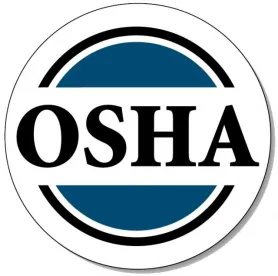Under the Biden administration, two significant and expected changes to the Occupational Safety and Health Administration (OSHA) would give the agency a greater role in reducing the spread of COVID-19 at the workplace, both of which would affect manufacturers throughout the United States.
On January 29, 2021, OSHA released “Protecting Workers: Guidance on Mitigating and Preventing the Spread of COVID-19 in the Workplace” in response to President Joe Biden’s Executive Order issued on January 21, 2021. The guidance is not a standard or regulation and creates no legal obligations for employers, but it is a step toward fulfilling a Biden campaign pledge that OSHA would “immediately release and enforce an Emergency Temporary Standard (ETS) to give employers … enforceable guidance on what to do to reduce the spread of COVID.” In 2020, President Donald Trump’s Labor Secretary, Eugene Scalia, declined to enact such an emergency temporary standard, and instead relied upon existing standards that address Respiratory Protection, Personal Protective Equipment, Sanitation, Recordkeeping and the General Duty Clause, which requires employers to provide “employment and a place of employment [that] [is] free from recognized hazards that are causing or are likely to cause death or serious physical harm to [its] employees.”
As a candidate, Biden promised to be “the most pro-union president you have ever seen” and “unions are going to have increased power” in his administration. His administration has installed James “Jim” Frederick, a former United Steelworkers safety official, as the acting Deputy Assistant Secretary to lead OSHA on an interim basis. Frederick has indicated that, in that role, he will be focused on drafting and implementing an Emergency Temporary Standard to address COVID-19.
In addition, the Biden campaign publicly pledged to “double the number of OSHA investigators to enforce the law and existing standards and guidelines.” Through attrition, the number of Compliance Safety and Health Officers employed by OSHA dropped from 1,016 positions in 2010 to a historic low of 875 inspectors by January 1, 2019. Biden’s campaign declared that “at least twice the number of inspectors are needed” as a result of the “exigencies of [the COVID-19] crisis[] and the need for rigorous enforcement of workplace standards across the country.” While filling vacant positions will recover some ground, it is likely that additional Congressional funding will be needed.
Best Practices for Manufacturers
The importance placed by the Biden administration on increasing OSHA’s authority and revitalizing its workforce should be closely monitored by all employers, especially manufacturers. Manufacturers likely will find themselves under greater scrutiny by OSHA because manufacturing work (1) requires employees to work closely with one another on production or assembly lines, (2) requires multiple employees to touch the same tools or machinery, and (3) is generally not conducive to remote work. Accordingly, manufacturers should review and implement the interim guidance offered by the Centers for Disease Control and Prevention and OSHA. Manufacturers should consider modifying the alignment of workstations so that workers are at least six feet apart in all directions, installing physical barriers such as strip curtains or plexiglass to separate manufacturing workers from each other, and consulting with a ventilation engineer to ensure adequate ventilation in work areas. Manufacturers also should consider preparing employee training and education efforts and COVID-19 Prevention Plans as suggested in the OSHA guidance.




 />i
/>i
